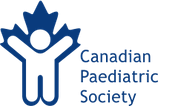Statement Retired
The position statement or practice point you were looking for has been removed from our website. Our committees and sections regularly review their documents to ensure they are current, and this process can result in documents being retired from our library. While we are unable to provide more information about individual documents that have been retired, you can find other CPS statements and practice points here, and information for parents/caregivers on our Caring for Kids website.
